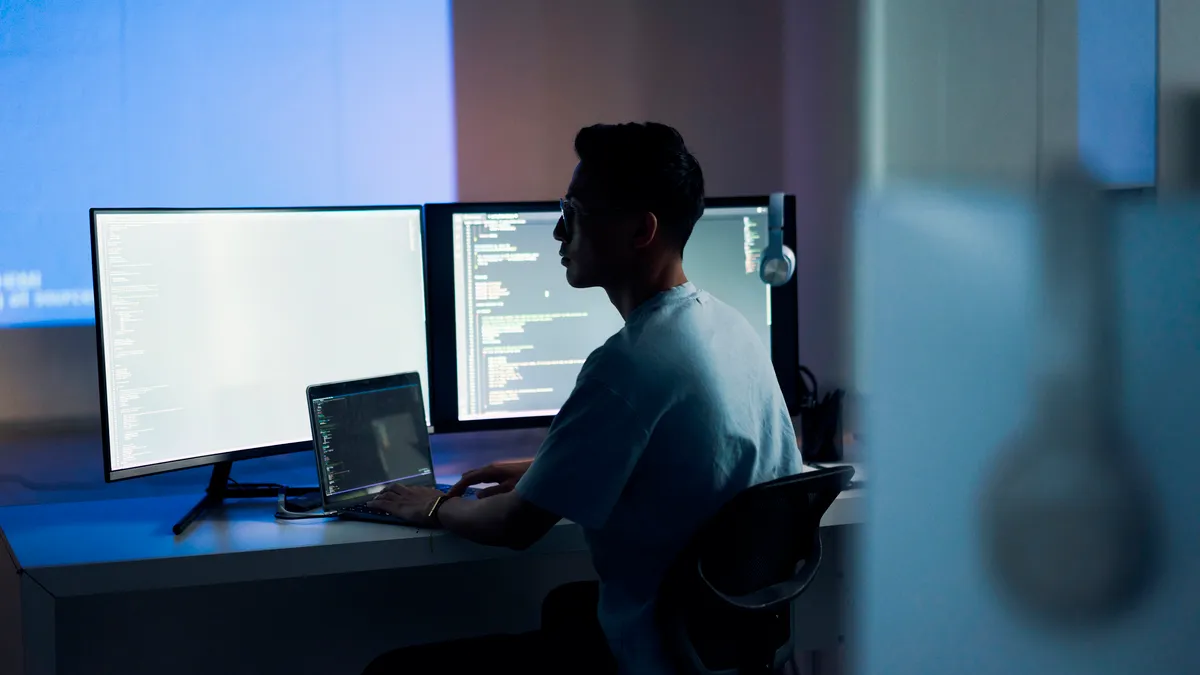Dive Brief:
- Developer reliance on AI is growing in concert with increasing adoption rates, according to a survey published Tuesday by Google Cloud's Dora research program. This year’s DevOps Research and Assessment report included responses from nearly 5,000 tech pros.
- AI adoption among software developers reached 90%, a 14% year-over-year increase, the survey found. The most common use cases include writing new code, modifying existing code, creating tests and writing documentation.
- Software development pros typically allot a median of two hours daily to working with AI. More than 3 in 5 technologists are “heavily relying” on the technology for their job, and just 5% report no reliance on AI, according to the report.
Dive Insight:
As AI becomes more ingrained in daily development workflows, enterprises are tasked with more than just giving teams access to the technology. CIOs are rethinking career paths and skills needs, along with culture changes and governance improvements.
“AI is a transformative tool for developers, but realizing its full potential requires more than just adoption,” Ryan Salva, senior director of product management at Google, said in a blog post accompanying the report. “It demands that organizations evolve their culture, processes and systems to support a new era of software development.”
Businesses are bullish on AI-assisted software development, but leaders are also worried it could stunt skills growth and present other problems. Nearly 1 in 3 IT leaders said overreliance on AI without accountability is their top concern, according to a Canva survey published this month. Executives are wary about the ability of their junior employees to grow their careers as AI adoption expands.
Despite rising usage rates, developers have qualms about the technology, with accuracy and quality problems persisting. Software developers said their biggest frustrations include dealing with AI tools that are “almost right, but not quite,” as well as the time it takes to debug generated code, according to a Stack Overflow survey.
Even with the hurdles, developers still feel the top-down pressure to adopt and efficiently use the tools. The majority of developers say output expectations are on the rise as leaders believe AI will help deliver projects faster, according to a HackerRank report published in March.
But it’s not all AI doom and gloom. This year’s Google Cloud report was able to link higher software delivery throughput to AI adoption, reversing last year’s findings of a slowdown. Some developers credited AI for increasing productivity and positively impacting code quality.
“While AI is boosting individual performance, its effect on organizations is more complex,” Salva said in a blog post. “The ongoing challenge remains of ensuring software works as intended before it's delivered to users.”
Companies are honing their approach to AI-reliant software development. Mondelēz International has found AI-powered coding tools to be especially effective in shortening development cycles, and new hires use the tools as a learning resource. But the company has also prioritized guardrails and governance amid adoption efforts.
As the technology matures, most AI models are getting better at coding. OpenAI’s o3 model solved nearly 72% of coding problems earlier this year, up from an overall high score of 4.4% in 2023, according to analysis from the Stanford Institute for Human-Centered AI.
Still, accuracy and quality issues with AI-generated code and content remain. Earlier this month, Harvard Business Review coined the term “AI workslop” to represent generated content that masquerades as good work but lacks substance.
Without the right approach, trust will continue to decline even as businesses put more resources into implementation. Almost half of workers said they currently don’t trust colleagues’ work when AI is used to assist, according to a Udacity report.
In the face of unknowns, risk mitigation techniques can become a CIO’s best friend. Requiring reviews of AI code and strengthening security processes can help enterprises tap into the latest use cases while minimizing unnecessary threats.













